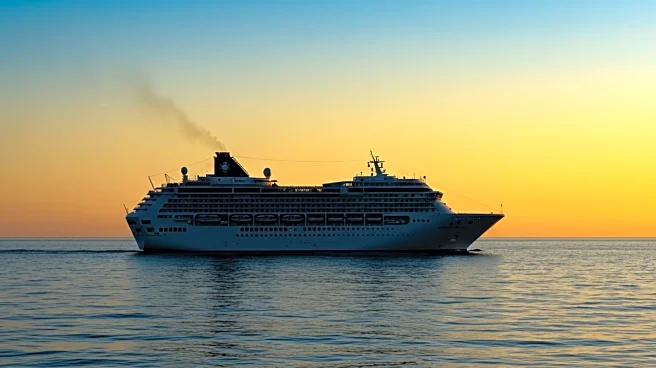What's Happening?
Princess Cruises has announced the successful completion of sea trials for its second Sphere-Class ship, the Star Princess. The trials took place from August 9 to 12 in the Adriatic Sea, where the vessel underwent tests for steering, navigation systems, and propulsion. The Star Princess, powered by liquefied natural gas (LNG), marks a significant advancement in reducing emissions. The ship is equipped with Azipod propulsion units and bow thrusters for enhanced maneuverability. Captain Gennaro Arma, a veteran with Princess Cruises, led the trials and will oversee the final outfitting phase. The ship is set to debut on October 4, 2025, with Mediterranean sailings from Barcelona. It features 30 dining and bar venues, advanced entertainment options, and luxurious accommodations, including over 1,500 balcony staterooms.
Why It's Important?
The successful sea trials of the Star Princess represent a major milestone for Princess Cruises, highlighting the company's commitment to environmental sustainability through LNG-powered ships. This development is significant for the cruise industry, which faces increasing pressure to reduce its carbon footprint. The introduction of advanced propulsion technology enhances the ship's efficiency and maneuverability, potentially setting new standards for future vessels. The Star Princess's debut in the Mediterranean is expected to attract significant interest from travelers, boosting tourism and economic activity in the region. The ship's luxurious offerings and innovative design may also elevate the competitive landscape in the cruise sector.
What's Next?
As the Star Princess enters its final outfitting phase, Princess Cruises is preparing for its inaugural season, which includes sailings to the Caribbean, Panama Canal, and Alaska. The company is actively promoting bookings for these voyages, aiming to capitalize on the ship's advanced features and environmental credentials. Stakeholders in the cruise industry will likely monitor the Star Princess's performance closely, as its success could influence future ship designs and operational strategies. Additionally, environmental groups may assess the impact of LNG technology on emissions reduction, potentially advocating for broader adoption across the industry.











